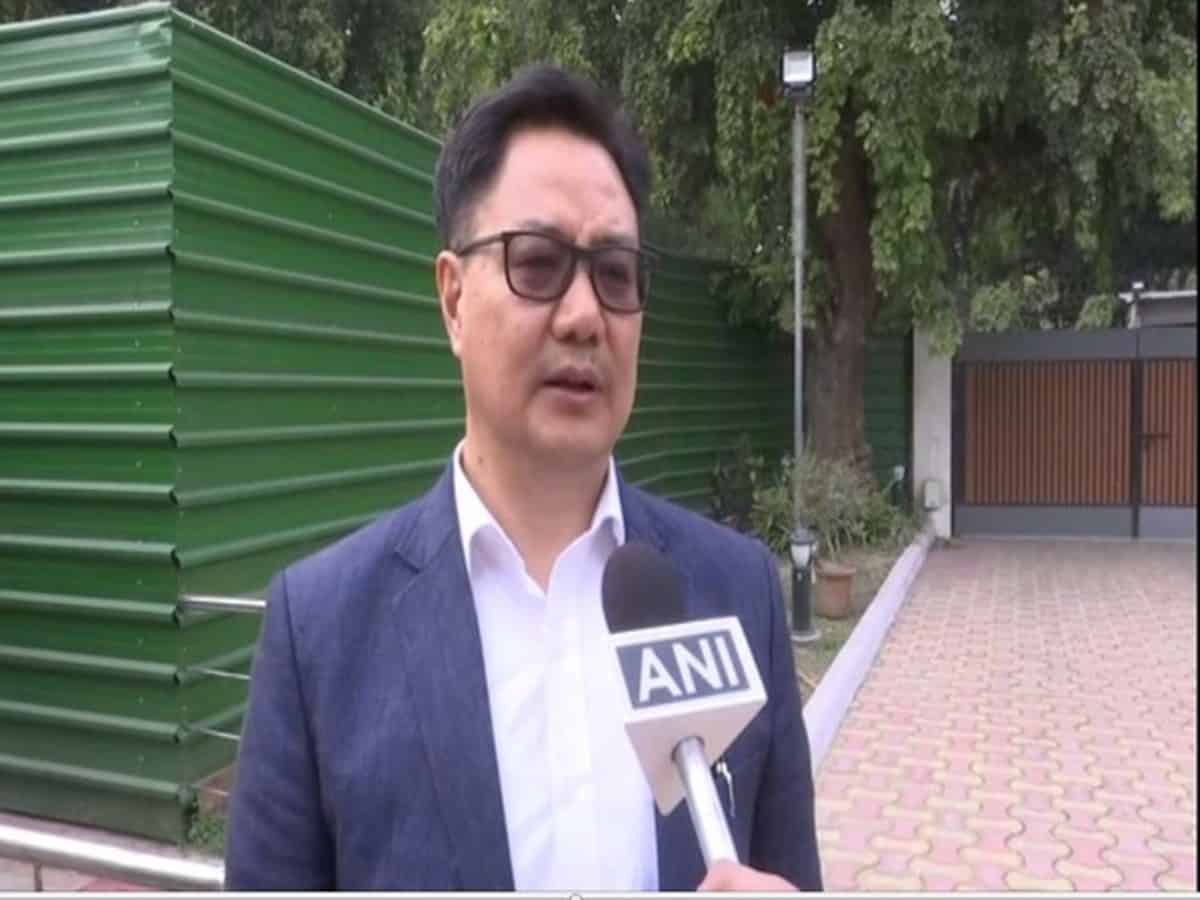
New Delhi: The government has been receiving representations from “diverse sources” on lack of transparency, objectivity and social diversity in the collegium system of appointment of Supreme Court and high court judges with the request to improve the mechanism, Rajya Sabha was informed on Thursday.
In a written reply, Law Minister Kiren Rijiju also said the government has sent suggestions for supplementing the Memorandum of Procedure for appointment of judges to the high courts and Supreme Court.
MoP is a document which guides the appointment and transfer of judges in the higher judiciary.
He recalled that in a bid to make the collegium system of appointments of judges “more broad-based, transparent, accountable and bringing objectivity in the system”, the government brought into force the Constitution (Ninety-Ninth Amendment) Act, 2014 and the National Judicial Appointments Commission Act, 2014 on April 13, 2015.
However, both the Acts were challenged in the Supreme Court which eventually declared both the laws as unconstitutional and void on October 16, 2015.
The collegium system, as existing prior to the enforcement of the Constitution (Ninety-Ninth Amendment) Act, 2014, was declared to be operative.
“Representations from diverse sources on lack of transparency, objectivity and social diversity in the collegium system of appointment of judges to the constitutional courts (SC and the HCs) are received from time to time with the request to improve this system of appointment of judges,” he said.
In a related but a separate reply, Rijiju said as on December 16, 154 proposals received from high courts were at various stages of processing between the government and the Supreme Court Collegium.
“While every effort is made to fill up the existing vacancies expeditiously, vacancies of judges in high courts do keep on arising on account of retirement, resignation or elevation of judges and also due to increase in the strength of judges,” he said.
As on December 16, against the sanctioned strength of 34 judges, 28 judges were working in the Supreme Court leaving six vacancies to be filled. Against the sanctioned strength of 1,108, 775 judges were working in the 25 high courts, leaving 333 vacancies to be filled.
He pointed out that recommendations from high court collegiums are yet to be received for 179 vacancies in high courts.
Amid a standoff between the government and the Supreme Court Collegium over the appointment of judges, a parliamentary panel had recently asked the Executive and the Judiciary to come up with an “out of box thinking” to deal with the “perennial problem” of vacancies in high courts.
The committee also said that it is “surprised” to note that the Supreme Court and the government have failed to reach at a consensus on revision of the Memorandum of Procedure for appointment of judges to the Supreme Court and the high courts, though the same is under consideration of both for “about seven years now”.
The committee expected the government and the judiciary to finalise the revised MOP, which is more efficient and transparent.
On November 25, the government had asked the Supreme Court Collegium to reconsider 20 files related to appointment of high court judges.
The government had expressed “strong reservations” about the recommended names.
Out of the 20 cases, 11 were fresh cases and nine were reiterations made by the top court collegium.
The government has returned all the names related to fresh appointments in various high courts on which it had “differences” with the Supreme Court Collegium, sources had said.
